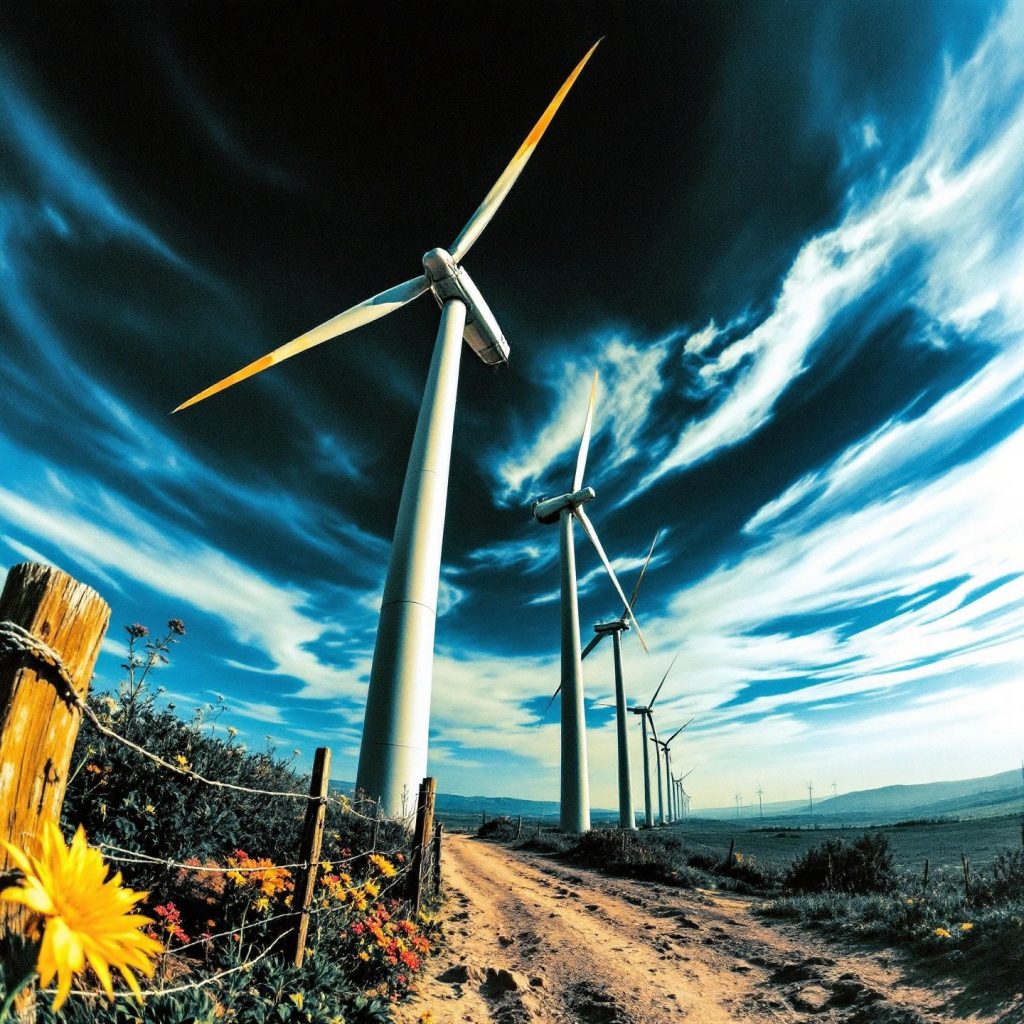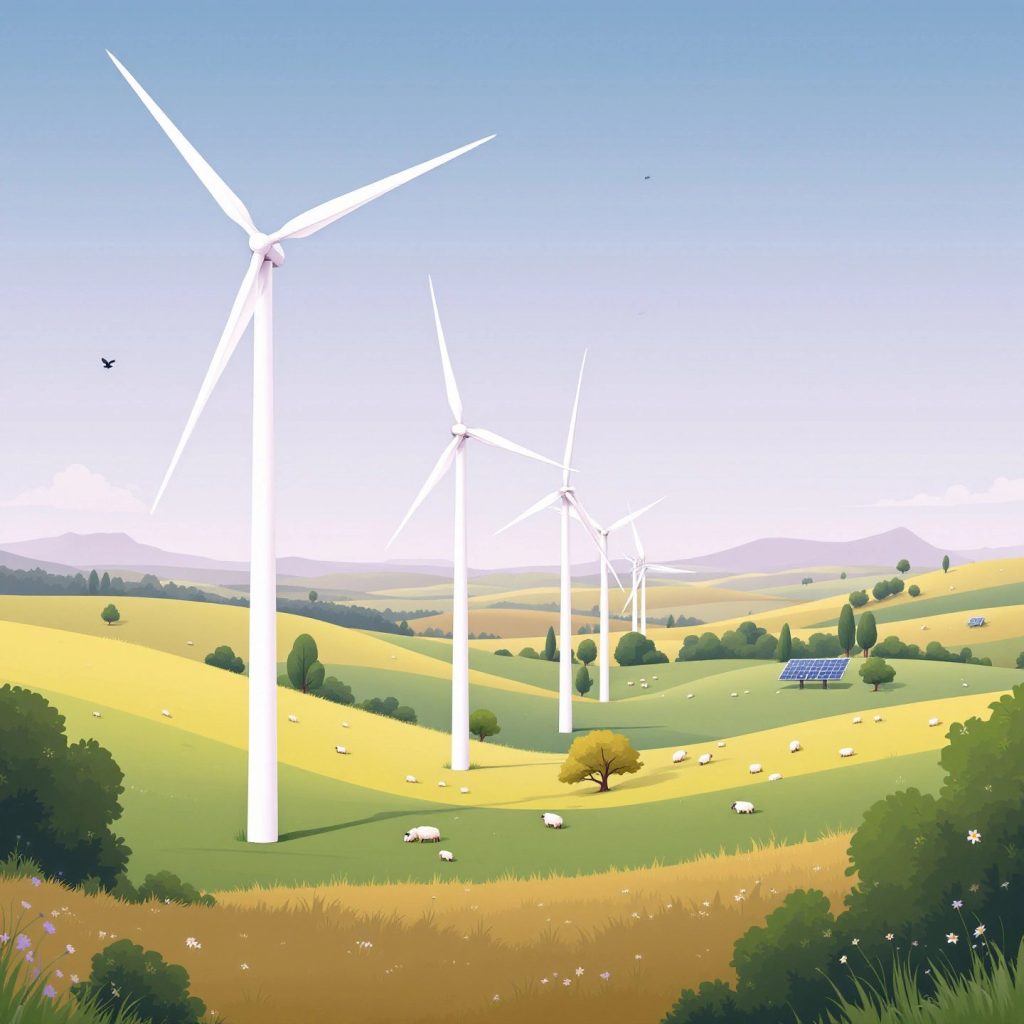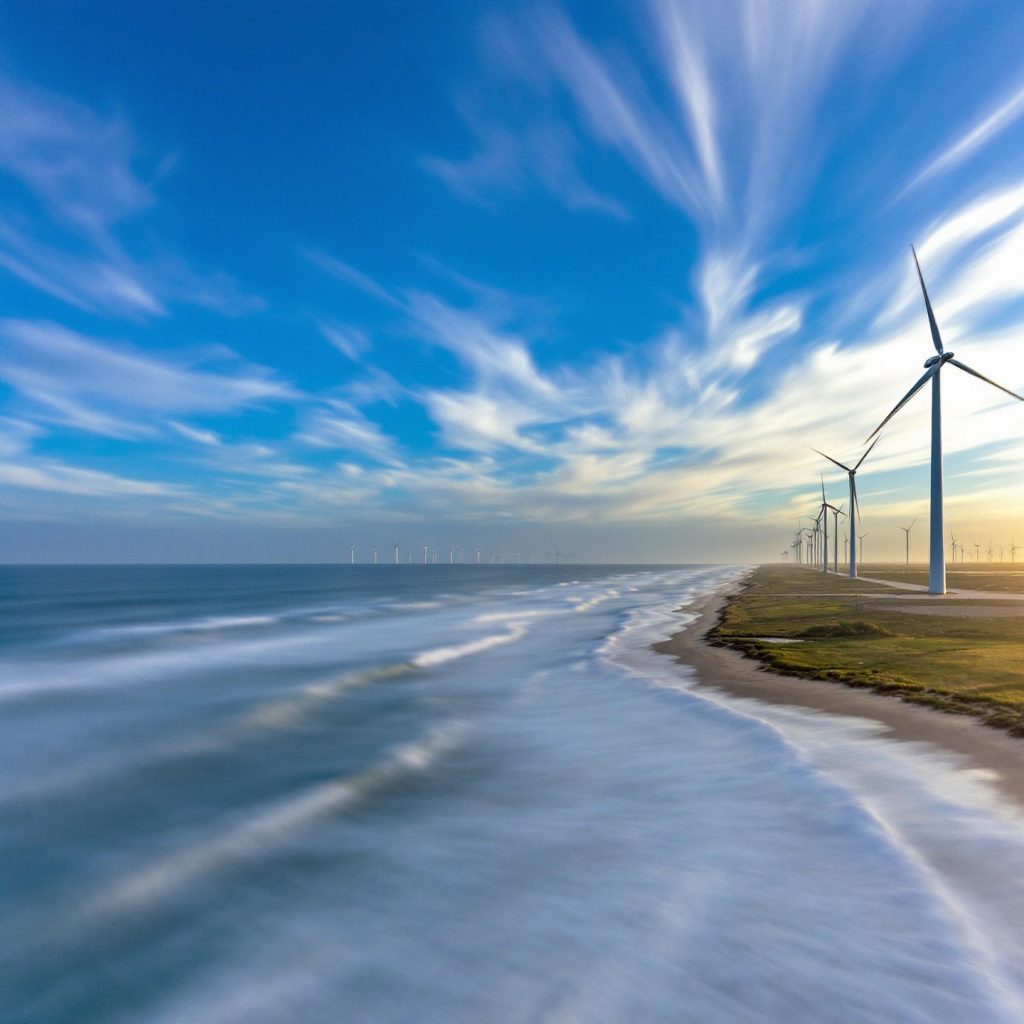Introduction to Facts About Wind Energy
Imagine a world where the air is cleaner, and energy is harnessed from the natural forces of the Earth. Sounds like a dream? Well, with the rise of wind energy, this vision is becoming a reality. Wind energy, a cornerstone of the renewable energy sector, is gaining traction as a sustainable power source. Its importance cannot be overstated as it plays a pivotal role in reducing carbon emissions and combating climate change. As we delve into the facts about wind energy, you’ll discover its benefits, technological advancements, and its critical role in sustainability.
In recent years, the importance of wind energy has surged, captivating the attention of industry experts and environmentally conscious communities alike. This article will explore essential insights into wind energy, shedding light on its growing significance in global energy discussions. From its technological marvels to its environmental contributions, wind energy is a topic that continues to inspire and empower those committed to a greener future.
The Rise of Wind Power in Modern Energy Discussions
Wind power has become a pivotal subject in global energy debates, primarily due to its potential to revolutionize how we produce and consume electricity. Over the past decade, technological advancements have significantly enhanced the efficiency and feasibility of wind energy, making it a cornerstone of the renewable energy landscape. But what exactly has driven this surge in wind power discussions?
Several factors contribute to wind power’s prominence in energy conversations:
- Technological Innovations: Developments such as taller towers, longer blades, and floating turbines have expanded the potential of wind energy, allowing it to be harnessed even in areas with lower wind speeds. According to a study by the National Renewable Energy Laboratory, these innovations could unlock 80% more economically viable wind energy capacity in the United States alone (NREL, 2023).
- Policy Support: Government incentives and international agreements have played a crucial role in promoting wind energy. The Inflation Reduction Act in the United States, for example, introduced significant funding for wind power, while the European Union’s REPowerEU Plan aims to accelerate wind deployment across the continent (IEA, 2025).
- International Collaborations: Global conferences and agreements, such as the COP26 and the European Wind Energy Action Plan, have emphasized the importance of wind energy in achieving climate goals. These platforms facilitate knowledge exchange and set ambitious targets for renewable energy adoption.
These advancements and policy shifts underscore the growing recognition of wind energy’s role in a sustainable future. As we continue to explore the potential of wind power, it becomes clear that it is not just a fleeting trend but a vital component of the global energy transition. Next, we will delve into the intricacies of wind technology and how it transforms kinetic energy into electricity, further solidifying its place in the energy sector.
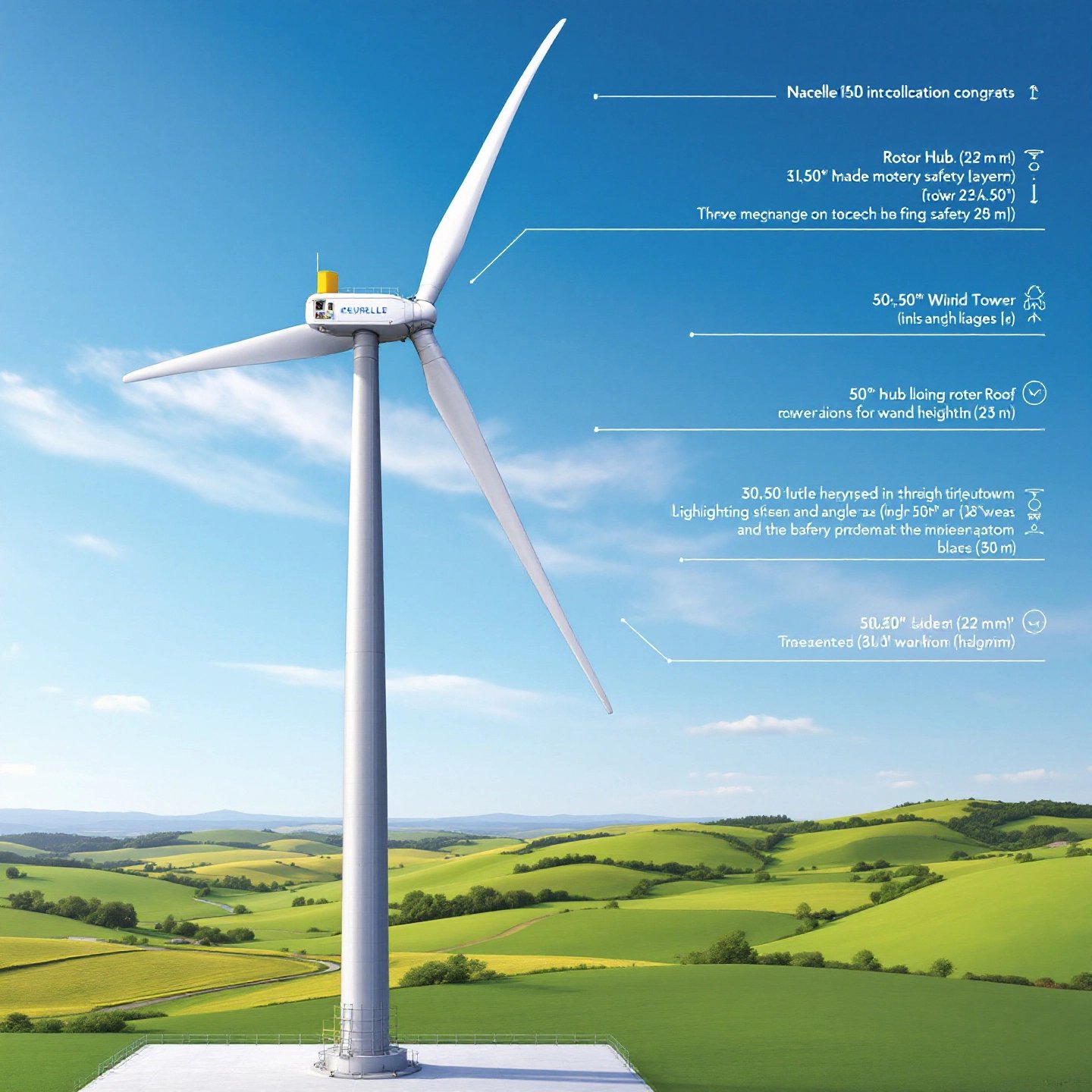
Understanding Basic Facts about Wind Technology
Have you ever wondered how those towering wind turbines dotting the landscape transform the invisible force of wind into electricity? The process is both fascinating and ingeniously simple. Wind turbines harness kinetic energy from the wind, converting it into mechanical power and subsequently into electricity. Let’s break down the essential wind turbine components and explore how they work together to achieve this remarkable feat.
Key Components of a Wind Turbine
- Rotor Blades: These are akin to airplane wings and are crucial in capturing wind energy. As wind flows over the blades, it creates lift and drag, causing the rotor to spin.
- Nacelle: This houses the generator and gearbox, converting the rotor’s mechanical energy into electrical energy.
- Tower: The tall structure supports the nacelle and rotor blades, positioning them high in the air where wind speeds are typically stronger and more consistent.
- Generator: Converts mechanical energy from the rotor into electricity. It can be connected directly or through a gearbox that increases the rotational speed.
Understanding wind energy technology requires knowing how these components work together. The rotor blades capture wind energy, and the nacelle’s generator converts this energy into electricity, which is then transmitted through power lines.
Considerations for Turbine Placement and Efficiency
Placement is critical for maximizing a wind turbine’s efficiency. Ideally, turbines are placed in areas with consistent, strong winds, such as coastal regions or open plains. Efficiency rates can vary depending on the turbine’s design and location, with capacity factors often ranging from 20% to 40%.
| Turbine Size | Capacity Factor (%) | Power Output Range (MW) |
|---|---|---|
| Small (<1 MW) | 20-30% | 0.1-1 |
| Medium (1-3 MW) | 25-35% | 1-3 |
| Large (>3 MW) | 30-40% | 3-10 |
As you can see, larger turbines tend to have higher capacity factors, making them more efficient at converting wind into electricity. This efficiency is a key reason why wind energy is a growing focus in sustainable energy discussions. Next, we will explore how wind energy contributes to sustainability goals, highlighting its environmental benefits and role in reducing carbon emissions.
How Wind Energy Contributes to Sustainability Goals
Imagine a world where the air is cleaner, and our reliance on fossil fuels is significantly reduced. This vision is becoming increasingly feasible thanks to wind energy, a crucial player in the realm of wind energy sustainability. But how exactly does wind energy contribute to our sustainability goals? Let’s explore its profound impact on reducing carbon emissions and its advantages over traditional energy sources.
Reducing Carbon Emissions and Environmental Footprint
Wind energy stands out as a renewable energy solution that significantly cuts down on carbon emissions. Unlike fossil fuels, which are notorious for their high emissions, wind power generates electricity without releasing carbon dioxide (CO2) during operation. According to the American Clean Power Association, U.S. wind turbines currently reduce carbon emissions by over 100 million tons annually, equivalent to taking 20 million cars off the road (American Clean Power, 2023). This reduction is crucial in the fight against climate change and aligns with global climate targets.
Moreover, wind energy’s lifecycle greenhouse gas emissions are minimal compared to coal and natural gas. For instance, wind energy produces around 11 grams of CO2 per kilowatt-hour (g CO2/kWh), while coal and natural gas emit approximately 980 g CO2/kWh and 465 g CO2/kWh, respectively (U.S. Department of Energy, 2024). This stark contrast highlights wind energy’s superior environmental footprint.
Complementary Solutions and Broader Benefits
In addition to reducing emissions, wind energy also minimizes water usage—a critical advantage in water-scarce regions. Traditional power plants consume vast amounts of water for cooling, whereas wind turbines require no water for electricity generation. This makes wind energy an environmentally friendly choice that supports sustainable water management.
For those looking to further embrace renewable energy solutions, platforms like Renewable Energy Nexus offer valuable resources and products. They provide a range of solar panels that complement wind energy, helping individuals and businesses reduce their carbon footprints and energy costs. By integrating wind and solar power, you can create a robust and sustainable energy system tailored to your needs. Explore their offerings at Renewable Energy Nexus for more information.
As we continue our journey towards a sustainable future, wind energy remains at the forefront, providing clean, reliable power that supports environmental and economic goals. Next, we’ll delve into some surprising and fun insights about wind energy that are sure to spark your curiosity.
Surprising and Fun Insights That Spark Curiosity
Wind energy is not only a powerhouse of sustainability but also a source of fascinating and fun facts that captivate the imagination. From innovative applications to iconic wind farms, wind energy is full of surprises. Let’s explore some fun facts about wind energy that highlight its versatility and global impact.
- A Symphony in the Sky: Did you know that a modern wind turbine consists of approximately 8,000 parts? These components work in harmony to convert wind into electricity, showcasing a remarkable feat of engineering (Synergy, 2022).
- Height of Innovation: Wind turbine towers can reach up to 150 meters tall, making them some of the tallest structures in the world. Imagine a structure as tall as a skyscraper, gracefully capturing the wind to generate power.
- Global Giants: The Gansu Wind Farm in China is set to become the world’s largest, with plans to expand its capacity to 20 gigawatts, enough to power millions of homes (Pager Power, 2023).
- Windy Olympics: The 2018 Winter Olympics in PyeongChang, South Korea, was powered entirely by wind energy, showcasing how renewable energy can support major global events (Pager Power, 2023).
- Artistic Ventures: In Denmark, decommissioned wind turbine blades have been creatively repurposed into bike shelters and playground equipment, demonstrating a commitment to sustainability and innovation (Synergy, 2022).
- Nighttime Power: Unlike solar energy, wind power can be generated at any time of day or night, often finding its peak during nighttime when winds are stronger.
These interesting wind energy insights highlight not only the technical marvels of wind power but also its cultural and environmental contributions. As we continue to explore the potential of wind energy, it’s clear that its impact extends far beyond electricity generation. Next, we’ll delve into essential facts that showcase wind power’s benefits, including its efficiency and role in job creation.
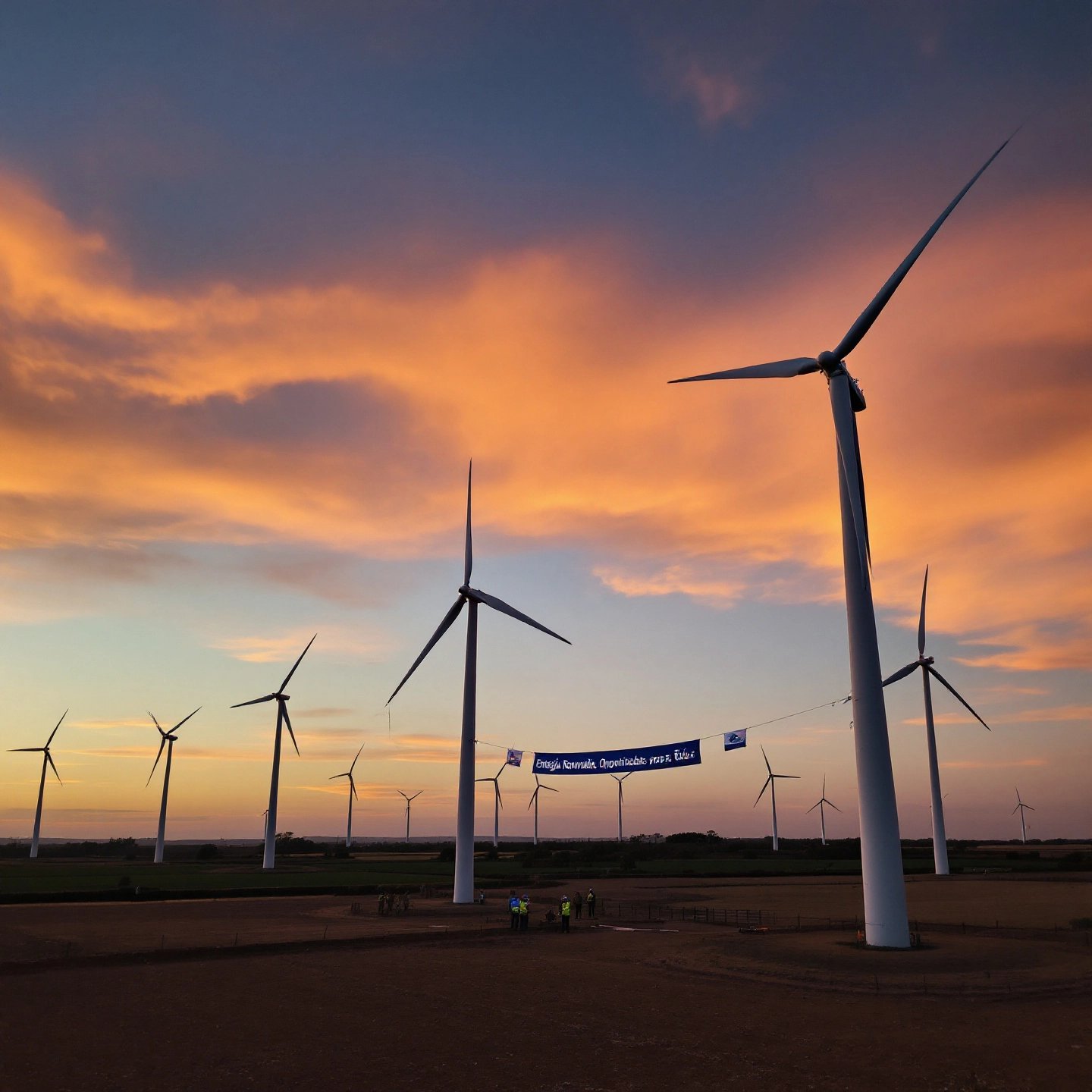
Essential Facts for Evaluating Wind Power Benefits
Wind energy is a cornerstone of modern renewable energy solutions, offering numerous benefits that underscore its viability as a sustainable power source. Here, we present ten essential facts that highlight the wind power benefits and its efficiency, cost-effectiveness, and role in job creation:
- Efficiency in Energy Conversion: Modern wind turbines have capacity factors ranging from 30% to 50%, comparable to fossil fuel plants, making them highly efficient in converting wind into electricity (University of Michigan, 2024).
- Cost-Effectiveness: Over the past decade, the cost of wind energy has decreased by 31%, making it one of the most economical sources of new electricity generation (American Clean Power, 2025).
- Job Creation: The wind industry supports over 300,000 jobs in the U.S., including roles in manufacturing, installation, and maintenance, making it a significant contributor to the economy (American Clean Power, 2025).
- Environmental Benefits: Wind power helps avoid 351 million metric tons of CO2 emissions annually, equivalent to removing 61 million cars from the road, thereby playing a crucial role in reducing air pollution (American Clean Power, 2025).
- Water Conservation: Unlike traditional power plants, wind turbines require no water for cooling, conserving precious water resources and supporting sustainable water management.
- Energy Independence: By harnessing local wind resources, countries can reduce their reliance on imported fossil fuels, enhancing energy security and stability.
- Scalability: Wind energy can be deployed at various scales, from small community projects to large offshore wind farms, providing flexible solutions tailored to specific energy needs.
- Resilience to Price Fluctuations: Wind energy has no fuel costs, insulating it from the volatility of fossil fuel markets and ensuring stable electricity prices over time.
- Integration with Other Renewables: Wind power complements solar energy, providing a balanced renewable energy mix that maximizes generation potential throughout the day and night.
- Positive Public Perception: Wind energy enjoys broad public support due to its environmental benefits and role in mitigating climate change, fostering community acceptance and engagement.
These facts underscore the wind energy efficiency and its myriad benefits, reinforcing its status as a pivotal component of the global shift towards renewable energy. As we continue to explore innovative solutions, wind power stands out as a sustainable, cost-effective, and reliable energy source. In the next section, we will address common misconceptions about wind energy, providing clarity on its true impact and potential.
Exploring Common Misconceptions about Wind Energy
When it comes to wind energy, misconceptions abound, often clouding public perception and hindering its adoption. Let’s unravel some of these wind energy myths and provide clarity on the true impact and potential of wind power.
Myth #1: Wind Turbines Are Inefficient
Many argue that wind turbines are inefficient because they only generate electricity when the wind blows. However, modern wind turbines have a capacity factor of 35-40%, meaning they produce electricity a significant portion of the time. This efficiency is competitive with traditional power plants and complements other renewable sources like solar power, ensuring a stable energy supply (Statkraft, 2023).
Myth #2: Wind Turbines Are Harmful to Wildlife
There’s a persistent belief that wind turbines pose a severe threat to birds and other wildlife. While bird collisions can occur, studies show that the impact is minimal compared to other human-made structures like buildings and vehicles. Wind farm planning involves stringent environmental assessments to minimize risks to wildlife (thyssenkrupp, 2025).
Myth #3: Wind Turbines Are Noisy
Some people are concerned about noise pollution from wind turbines. While they do produce sound, modern designs have significantly reduced noise levels. The noise is typically inaudible at a distance of a few hundred meters, and the World Health Organization has found no substantial evidence linking wind turbine noise to adverse health effects (Statkraft, 2023).
Myth #4: Wind Energy Is Expensive
Another common misconception is that wind energy is too costly. In reality, the cost of wind power has decreased significantly over the past decade, making it one of the most affordable sources of new electricity generation. The lack of fuel costs further insulates it from market volatility, providing stable, long-term pricing (Statkraft, 2023).
Myth #5: Wind Turbines Are Not Recyclable
Finally, some believe that wind turbines cannot be recycled. Contrary to this belief, up to 90% of a wind turbine’s components, including metal parts and electrical systems, can be recycled. This recyclability underscores the sustainability of wind energy as part of a circular economy (thyssenkrupp, 2025).
By dispelling these misconceptions about wind power, we can better appreciate its role in a sustainable energy future. As we move forward, understanding the true capabilities and benefits of wind energy is essential for informed decision-making and support of renewable energy initiatives. Next, we will explore significant global milestones in wind technology development.
Significant Global Milestones in Wind Technology
As we delve into the history of wind energy, you’ll notice a series of pivotal milestones that have shaped its evolution into a major player in the global energy landscape. These milestones highlight the innovative spirit and technological advancements that have propelled wind energy to the forefront of renewable solutions. Let’s explore some key wind energy milestones and the pioneering countries that have led the charge in global wind technology.
Historical Benchmarks in Wind Energy Development
Wind energy has a rich history marked by transformative projects and innovations:
| Year | Project/Country | Achievement |
|---|---|---|
| 1888 | United States | First electricity-generating wind turbine by Charles F. Brush in Cleveland, Ohio. |
| 1941 | United States | Smith-Putnam wind turbine, the first megawatt-scale turbine, operated in Vermont. |
| 1979 | United States | MOD-1 turbine, the first to exceed 1 megawatt capacity, began operation. |
| 1980s | California, USA | California’s wind capacity exceeded 1,000 MW, leading the world in installed capacity. |
| 2008 | China | Gansu Wind Farm began construction, aiming to become the world’s largest wind farm. |
| 2014 | United Kingdom | Hornsea Wind Farm, one of the largest offshore projects, began operations. |
These milestones illustrate the global efforts and technological breakthroughs that have defined the development of wind energy. From the early days of windmills to the sophisticated turbines of today, each achievement has contributed to making wind energy a cornerstone of the renewable energy sector.
As we continue to harness the power of the wind, these milestones serve as a reminder of the potential for innovation and collaboration in creating a sustainable energy future. Next, we’ll explore the future developments and emerging trends that promise to further revolutionize wind power.
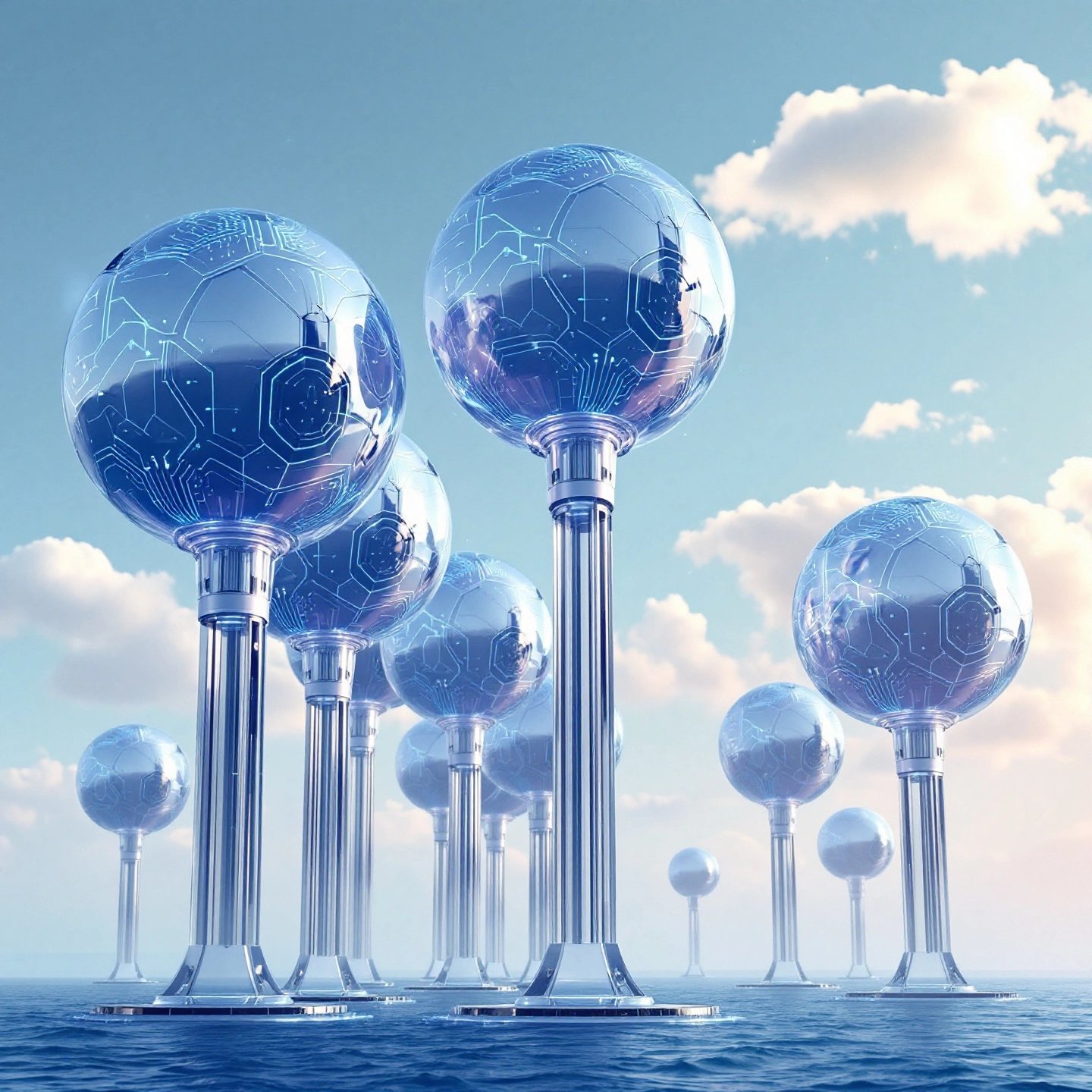
Future Developments and Emerging Trends in Wind Power
Imagine a future where wind energy is not only a major player in the renewable energy sector but also a leader in technological innovation. Sounds complex? Not when you consider the rapid advancements in wind technology and the supportive policy incentives driving this growth. Let’s delve into the future of wind energy and explore some emerging wind power trends that are setting the stage for a sustainable tomorrow.
Technological Innovations Paving the Way
Advancements in technology are revolutionizing how we harness wind energy. One of the most exciting developments is the advent of floating wind turbines. These structures can be placed in deeper waters where winds are stronger and more consistent, significantly expanding the potential locations for wind farms (U.S. Department of Energy). Moreover, AI optimization is making wind farms more efficient by predicting wind patterns and adjusting turbine operations in real-time to maximize energy output.
Additionally, innovations in turbine design, such as longer and lighter blades, are increasing the capacity and efficiency of wind turbines. These improvements are crucial for reducing the cost of wind energy and making it more competitive with traditional energy sources.
Policy Incentives Fueling Growth
Policy incentives play a vital role in the expansion of wind energy. The Production Tax Credit (PTC) and Investment Tax Credit (ITC) have been instrumental in supporting wind projects, offering financial benefits that make these projects more attractive to investors (WindExchange). The recent extension of these credits under the Inflation Reduction Act further bolsters the industry, ensuring continued growth and innovation.
Moreover, international collaborations and agreements are fostering a global approach to wind energy development. These initiatives encourage the sharing of knowledge and resources, accelerating technological advancements and deployment worldwide.
Renewable Energy Nexus: A Guide to Sustainable Technologies
For those interested in exploring sustainable energy solutions, platforms like Renewable Energy Nexus offer valuable insights and resources. They provide comprehensive guidance on the latest innovations in renewable energy, including advanced solar panels that complement wind energy systems. By integrating wind and solar power, you can create a robust and sustainable energy system tailored to your needs. Explore their offerings at Renewable Energy Nexus for more information.
As we look to the future, the potential for wind energy is vast and exciting. With continued technological advancements and supportive policies, wind power is poised to play a leading role in the global transition to renewable energy. Next, we’ll summarize the key takeaways about wind energy’s current state and future potential, encouraging you to engage with industry developments and consider your role in supporting clean energy solutions.
Conclusion
As we conclude our exploration of wind energy, it’s clear that this renewable powerhouse is not just a fleeting trend but a cornerstone of the global shift towards sustainable energy solutions. Wind energy’s current state is marked by technological advancements, policy support, and increasing global adoption, positioning it as a key player in reducing carbon emissions and achieving climate goals. Imagine a world where clean, renewable energy sources like wind and solar power dominate the energy landscape, drastically cutting our reliance on fossil fuels and fostering a healthier planet.
The wind energy future is promising, with innovations such as floating turbines and AI-driven optimizations paving the way for more efficient and widespread use. These developments, coupled with supportive policies, ensure that wind power will continue to grow and evolve, contributing significantly to a sustainable energy mix. As individuals and communities, we have the opportunity to support this transition by staying informed and engaging with industry developments.
Platforms like Renewable Energy Nexus provide valuable resources and products that complement wind energy, such as advanced solar panels. By integrating these technologies, we can create robust energy systems that cater to our unique needs while promoting environmental stewardship. Let’s embrace the potential of wind energy and take active steps towards a cleaner, more sustainable future.
Frequently Asked Questions About Wind Energy
1. What are 5 facts about wind energy?
Wind energy is a clean, renewable source that reduces carbon emissions. It’s cost-effective, creates jobs, and requires no water for power generation.
2. What are 5 good things about wind energy?
Wind power is environmentally friendly, cost-effective, job-creating, supports local economies, and enhances energy independence by reducing reliance on fossil fuels.
3. What are 3 wind energy advantages?
Wind energy is renewable, reduces carbon emissions significantly, and is increasingly cost-competitive with traditional energy sources.
4. What are some kid facts about wind energy?
Wind turbines can be taller than the Statue of Liberty. They convert wind into electricity, and a single turbine can power around 1,300 homes.
5. How does wind energy contribute to sustainability?
Wind energy reduces carbon emissions and water usage, supports climate goals, and provides a renewable energy source for a sustainable future.

